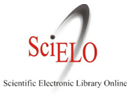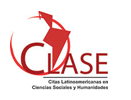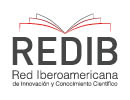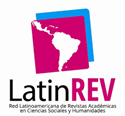Lugar de los migrantes en territorio sacro
DOI:
https://doi.org/10.21142/DES-901-2017-145-165Palabras clave:
Migrantes, Creencia, Prácticas religiosas, No afiliadosResumen
A mediados del siglo pasado autores clásicos como Herberg (1960) y Handlin (1973) afirmaban que la religión era un elemento central en la vida de los inmigrantes. Analistas recientes (Williams, 1988; Warner, 1998; Tweed, 1997; Orsi, 2002) coinciden con los clásicos citados arriba; sin embargo, los últimos incluyen en su discusión nuevas variables sociológicas. Hirschman (2004) interroga el modelo clásico y reflexiona sobre los estudios posteriores que han relativizado estas afirmaciones. En este documento, por un lado, analizo la creencia desde la perspectiva que apuesta por la fuerza que puede tener este factor entre
migrantes, y por el otro, utilizo un enfoque que toma en cuenta el origen y destino, tipo de iglesias, líderes espirituales y políticas eclesiásticas y de cómo estos inciden en la transformación de la religiosidad de los migrantes. Para ilustrar las diversas posiciones que ocupan los migrantes en el péndulo de lo sagrado utilizo casos empíricos en donde algunos quedan en el centro de la creencia, otros pueblan los espacios intermedios y muchos más inundan la periferia. Este tema ha sido poco atendido en los estudios sobre migración y religión.
Descargas
Referencias
Cadge, W., Levitt, P. y Smilde, D. (2011). De-Centering and Re-Centering: Rethinking Concepts and Methods in the Sociological Study of Religion.
Journal for the Scientific Study of Religion, 50(3): pp. 437-449.
Davie, G. (1994). Religion in Britain since 1945: Believing without Belonging. Oxford: Blackwell.
Dolan, J. (1973). Immigrants in the City: New York’s Irish and German Catholics. American Society of Church History, 41(3), pp. 354-368.
Fortuny Loret de Mola, P. (2002). The Santa Cena of the Luz del Mundo Church: A case of contemporary transnationalism. En H. R. Ebaugh y J. Chafetz (Eds.). Religion Across Borders: Transnational Religious Networks (pp.15-50). Walnut Creek: Altamira Press.
Fortuny Loret de Mola, P. y Juárez Cerdi, E. (2007). Espacios sagrados y seculares entre inmigrantes jornaleros en Immokalee, Florida. En A. Escobar Latapí (Coord.). Nación, Estado, comunidad: consolidación y emergencia
en la emigración mexicana (pp. 227-250). Buenos Aires: Ciesas y Antropofagia.
Handlin, O. (1973). The Uprooted. The Epic Story of the Great Migrations that made the American People. Boston: Little, Brown and Company.
Herberg, W. (1960). Protestant, Catholic, Jew: An Essay in American Religious Sociology. Garden City, Nueva York: Anchor Books.
Hirschman, C. (2004). The Role of Religion in the Origins and Adaptation of Immigrant Groups in the United States. International Migration Review, 38, pp. 1206-1233.
Orsi, R. (1997). Everyday miracles: The study of lived religion. En D. Hall (Ed.). Lived Religion in America (pp. 3-21). Princeton: University Press.
_______________ (2002). The Madonna of 115 Street: Faith and Community in Italian Harlem, 1880-1950. New Haven: Yale University Press. Pew Research Center (3 de noviembre de 2015). U.S. Public Becoming Less Religious. Recuperado de http://www.pewforum.org/2015/11/03/u-s-public-
becoming-less-religious
Schwartz, J. (2004). Protestant, Catholic, Jew... Public Interest, 155, pp. 106-125.
Simmel, G. (2012). La religión. Barcelona: Gedisa.
Tweed, T. (1997). Our Lady of the Exile: Diasporic Religion at a Cuban Catholic Shrine in Miami. Nueva York: Oxford University Press.
Warner, S. (1998). Immigration and Religious Communities in the United States. En W. Stephen y J. Wittner (Eds.). Gatherings in Diaspora: Religious Communities and the New Immigration. Filadelfia: Temple University Press.
Williams, R. B. (1988). Religions of Immigrants from India and Pakistan: New Threads in the American Tapestry. Cambridge: Cambridge University Press.
Descargas
Publicado
Número
Sección
Licencia

Esta obra está bajo una licencia http://creativecommons.org/licenses/by-nc-sa/4.0/



















